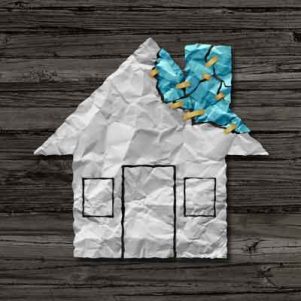Liability is usually referred to as the obligation a person has to be responsible for his actions[1]. In the case of a sale of a property under construction, the immovable property seller is liable for the faults and defects that the immovable property granted to the buyer might encounter.
Indeed, following the real estate and the financial market crises, the sale of properties under construction in Spain now offers interesting profitability prospects although there are still mounting concerns. It is thus important to know which guarantees and liability regimes are related to specific contracts.
In this case, it is necessary to consider the various possible different liabilities of an immovable property seller as well as the time period during which a victim can bring an action for damages.
Liability and limitation period for an action for damages
Article 1591 of the Spanish Civil Code[2]: 10 years limitation period and basic notion of ruin
Even though contractual liability is ruled by Article 1101 et seq. of the Spanish Civil Code, Article 1591 of the aforementioned code is the most important article regarding liability in the case of the demolition of a building due to construction faults, namely liability in case of ruin.
As a matter of fact, pursuant to Article 1591 of the Spanish Civil Code, the contractor of a building that falls into ruin as a consequence of construction deficiencies will be held liable for the damages and prejudices if the ruin occurs in the 10 years following the conclusion of the contract. The architect will be equally liable, starting from the same date and for the same duration if the ruin results from a defect of the ground or from a defect arising under his supervision of the construction. On the contrary, if the destruction results from a default of the contractor under the condition of the contract, then the action for damages shall become time barred after 15 years.
Jurisprudence has broadened the notion of ruin. Consequently, the notion of ruin in the Spanish Civil Code is different from its ordinary meaning. According to the jurisprudence, there are three types of ruins in civil law:
- Physical ruin, which identifies a total or partial collapse of the building
- Potential ruin, which identifies a future risk of collapse or a progressive deterioration
- Functional ruin, which identifies a deterioration that a building undergoes without affecting its solidity, but which still exceeds the status of imperfection, or that profoundly changes the use of the immovable property so that it is no longer fit for habitation.
Nonetheless, the principle of the 10 year liability period as per Article 1591 of the Spanish Civil Code gave rise to a controversial doctrine concerning its scope of application.
It is in this sense that Law 38/1999, of 5 November, on Construction Planning (LOE), still foresees the 10 years liability although it limited its scope of application. This law applies to all the immovable goods constructed after 5 May 2000.
Law 38/1999, of 5 November, on Construction Planning (LOE)
Article 17 of the LOE contains the general rule on civil liability. The law distinguishes between three different types of liability according to the cause of the sustained damage.
Regarding the 10 year liability period, Article 17 of the LOE foresees that natural or legal persons intervening in the construction process will be liable to the owners or to third party purchasers for 10 years for the material damages caused to the building by the faults and defects affecting the foundations, the supports, the beams, the floor slabs, the load-bearing walls or the other structural features which directly endangers the resistance of the stability of the building.
Undoubtedly, the liability system applied here does not preclude the application of contractual liability Natural or legal persons intervening in the construction process correspond to the property developer, the project owner, the constructor, the architect, etc.
For the faults and defects of constructions or facilities unable to meet the standard requirements for habitation, the LOE foresees a three year liability period.
The LOE also foresees a one year liability period for damages on the finishing components or on the components of the construction.
Every person intervening to the construction will be personally held liable for the work he/she carried out. Nevertheless, when it is impossible to determine the cause of the damages or of the prejudice, or when several persons participated in the realisation of the project and their level of participation has not been established, the various participants will be held joint and severally liable.
As per Article 18 of the LOE, the action for damages for the faults and defects must be commenced within two years from the moment when these damages occurred. The liability for failure to comply with the obligations imposed by the contract can also be commenced under the same time limitation.
The deadlines under Article 17 are prescription periods whereas the deadlines under Article 18 are limitation periods.
Furthermore, in the contracts relating to future sale, it is very common for the selling promoter to assume responsibility in case of defaults in construction. As a matter of fact, the latter, lodges a bank guarantee to the buyer which generally corresponds to 2% of the sale price and the buyer will be able to retain that amount if, in the two months following its delivery to the buyer, defaults of construction occur.
Nevertheless, liability for the faults and defects of construction of the persons intervening in the construction cannot be recognized if it is proven that the damages are the result of force majeure or of unforeseeable circumstances or of actions of a third party.
Cécile Proust & Clément-Henri Girardot
If you need additional information regarding the responsibilities of immovable property sellers in Spain,
[1] BERNSTEIN, Secret, 1913, I, 7, p.11
[2] Art. 1591 of the Spanish Civil Code: « The contractor of a building which should collapse as a result of defects in its construction shall be liable for any damages if such collapse should take place within ten years, counting from completion of construction; the architect who manages the building works shall have the same liability for the same term if the collapse should result from a defect in the land or from his management. If the cause should be the fault of the contractor, the action to claim for damages shall last fifteen years».





